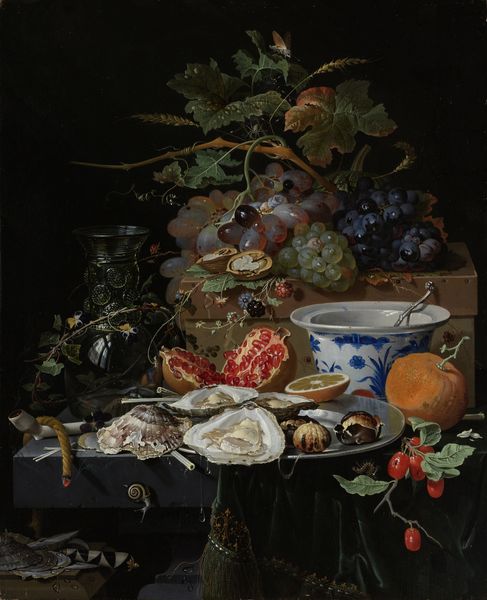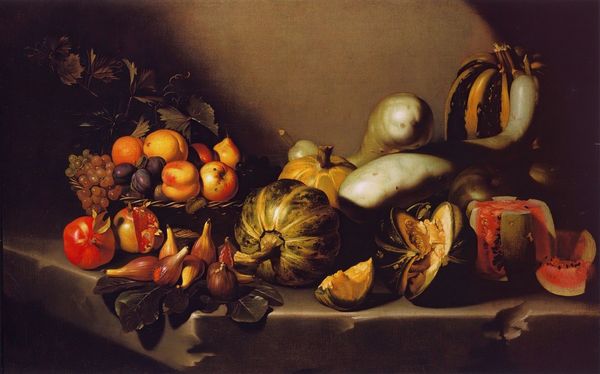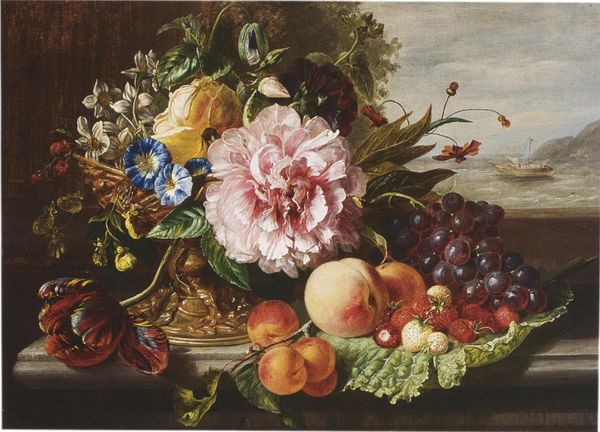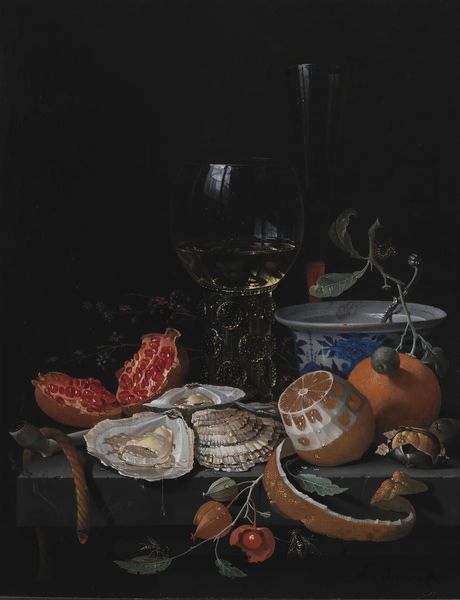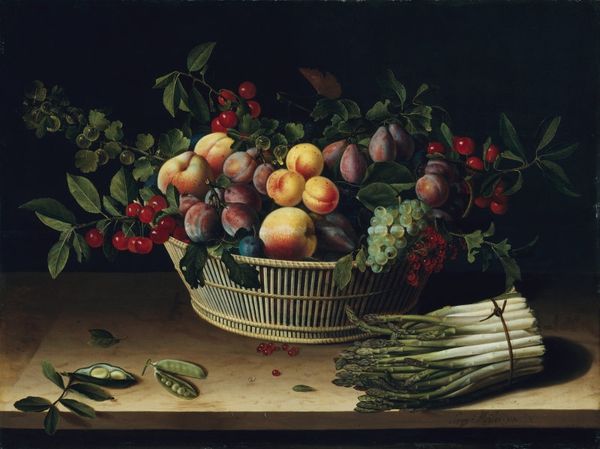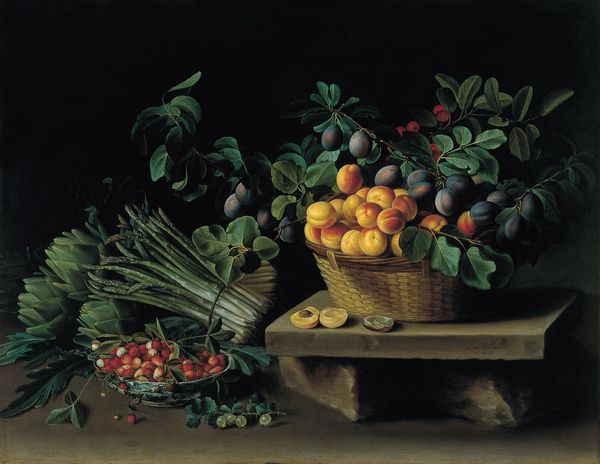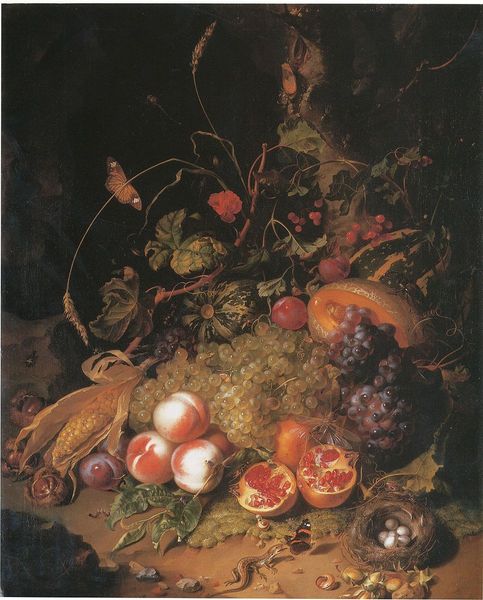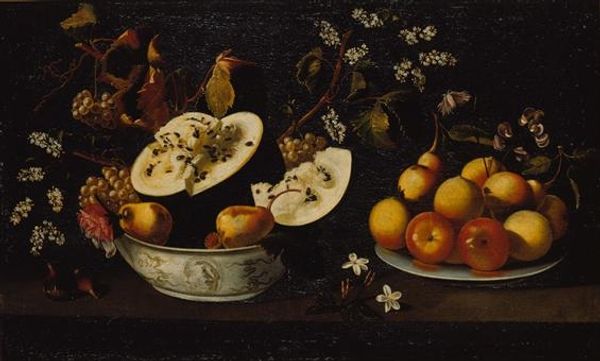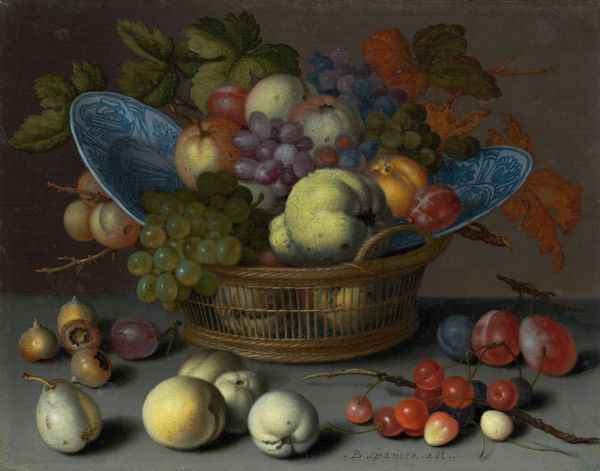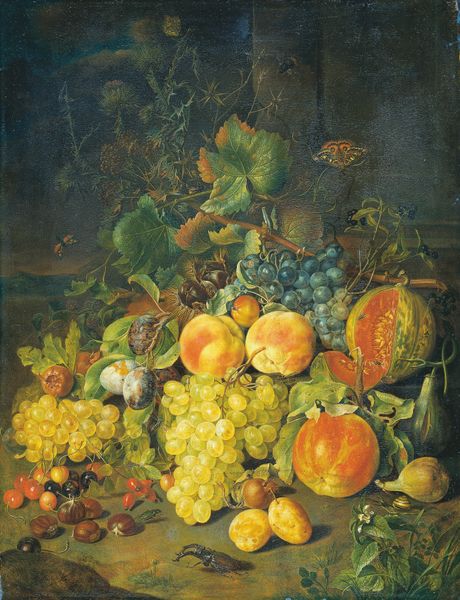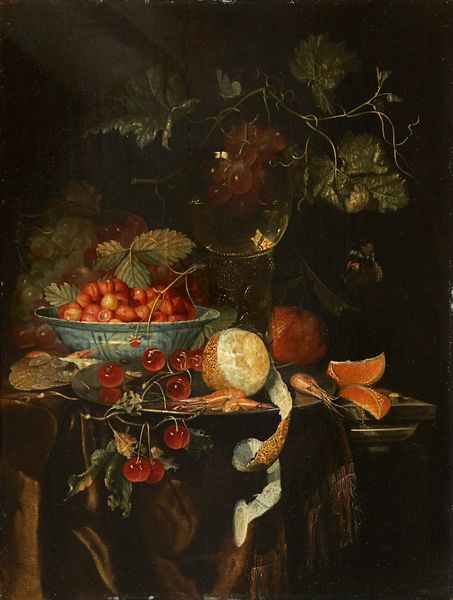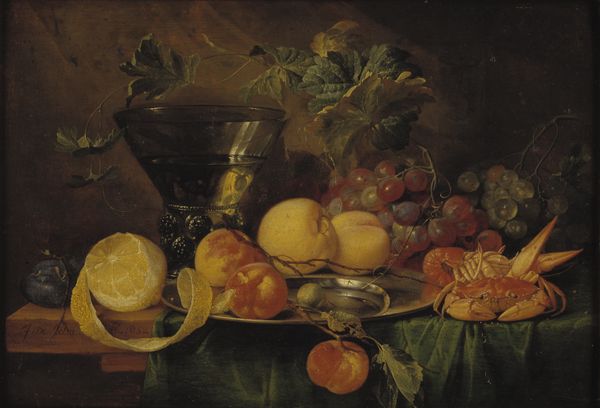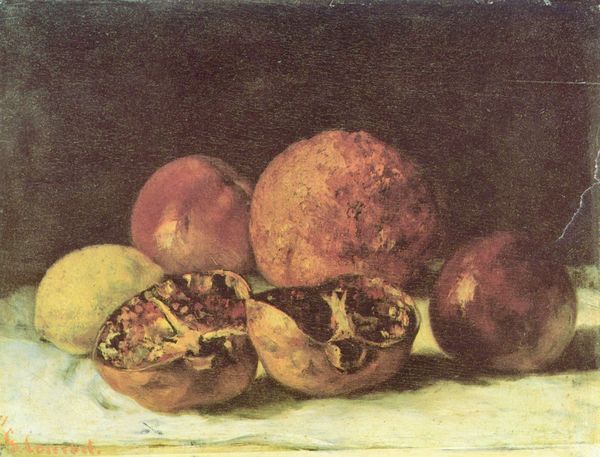
oil-paint
#
fish
#
food
#
oil-paint
#
oil painting
#
fruit
#
genre-painting
#
realism
Copyright: Public domain
Editor: Ferdinand Georg Waldmüller's "Still Life with Oysters, Fish and Exotic Fruit," created in 1842 with oil paint, presents an unusual assortment of… well, everything! It has an almost chaotic energy, yet the textures and colors are incredibly realistic. What stands out to you most about its composition? Curator: Focusing purely on form, the eye is drawn to the arrangement. The diagonal sweep from the dark upper left corner, laden with foliage, down to the lower right corner where the oysters glisten, is quite deliberate. It suggests a flow, a visual current connecting disparate elements. Do you perceive the relationship between light and shadow within this construct? Editor: Yes, the light emphasizes the textures – the scales of the fish, the smoothness of the oysters. It's very tactile. Is there significance in how the artist used light and shadow here? Curator: The sharp contrast illuminates the surfaces, calling attention to the meticulous detail and craftsmanship inherent in each object. The semiotic analysis might consider the dichotomy presented by objects symbolizing mortality, like the fish and oysters, against objects of vibrant life such as the flowers and pomegranates. Editor: So it's about contrasts – life and decay, light and shadow, smooth and rough? Curator: Precisely. Waldmüller masterfully manipulates the structural components, light, shadow, and texture, to engage the viewer in a visual dialogue, isn’t it? Editor: That's interesting. Seeing it as a deliberate play with opposites really does make me think about how carefully the artist constructed the visual narrative. Curator: The painting showcases the artist's commitment to representing natural forms with the utmost precision. Looking closer is very rewarding, no?
Comments
No comments
Be the first to comment and join the conversation on the ultimate creative platform.
